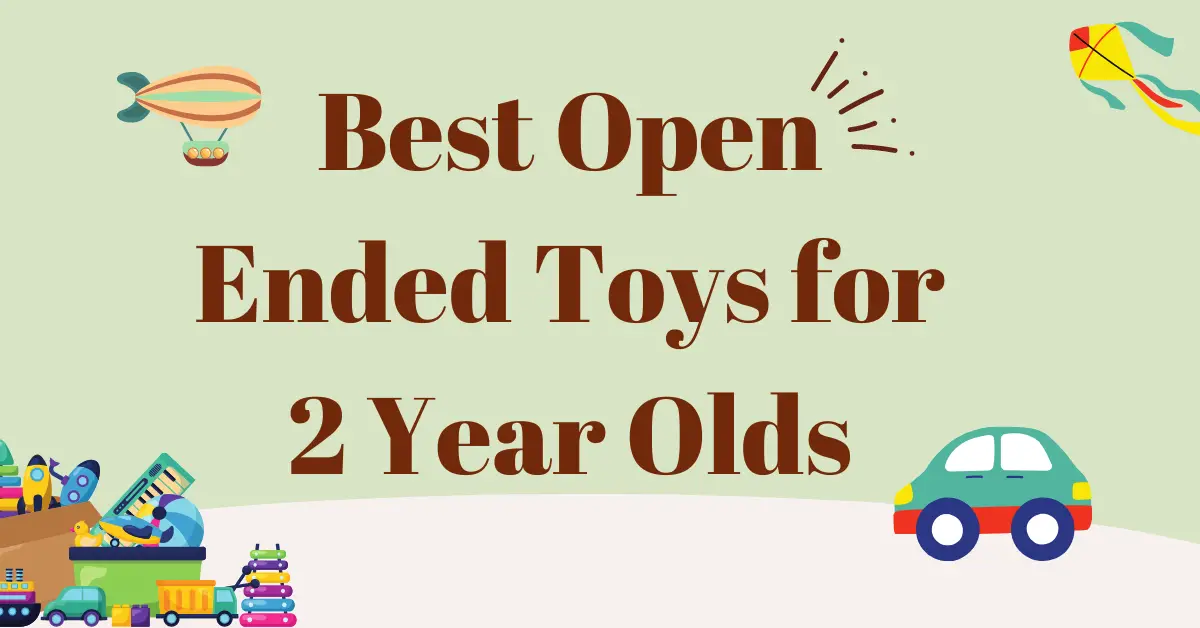Choosing the right toys for your little one can be both exciting and overwhelming. With aisles filled with flashing lights, loud noises, and gadgets that seem like they need an engineering degree just to operate, it’s easy to feel a bit lost. However, the secret to beneficial playtime might actually lie in something far simpler – open ended toys.
In this article, we’re going to explore the concept of open-ended toys and why they’re fantastic for 2-year-olds. We’ll cover what makes a toy open-ended, dive into the Montessori approach and even provide examples of how open-ended play can make your everyday routine more engaging for your little one. By the end, you’ll have a list of the best open-ended toys that are perfect for nurturing the curiosity, creativity, and cognitive growth of your 2-year-old.
What are Open Ended Toys for Toddlers?
So, what exactly are open-ended toys? These are toys that have no predetermined use or single way to play with them. In other words, they can be anything your child imagines them to be! A simple wooden block can turn into a car, a building, or even a piece of cake in a tea party. The possibilities are as limitless as your toddler’s imagination.
Now, you might be wondering how open-ended toys differ from their counterparts, the closed-ended toys. Closed-ended toys are those that have a specific function or outcome. Think of a toy that asks your child to match shapes or colours. Once the shapes are matched, that’s it – the toy has served its purpose. While these toys can be educational and entertaining, they don’t leave much room for creativity and imagination.
The benefits of open-ended toys, especially for toddlers, are impressive. They foster cognitive growth. By engaging with a toy that has multiple uses and outcomes, children learn problem-solving, logical reasoning, and flexibility. Moreover, open-ended toys encourage creativity. Without instructions or limitations, your child is free to invent games, stories, and even entire worlds. These toys also help in the development of fine motor skills and hand-eye coordination, as many of them involve stacking, building, or other forms of manipulation.
So, by incorporating open-ended toys into your child’s playtime, you’re doing much more than just keeping them entertained. You’re nurturing important skills that will benefit them for years to come.
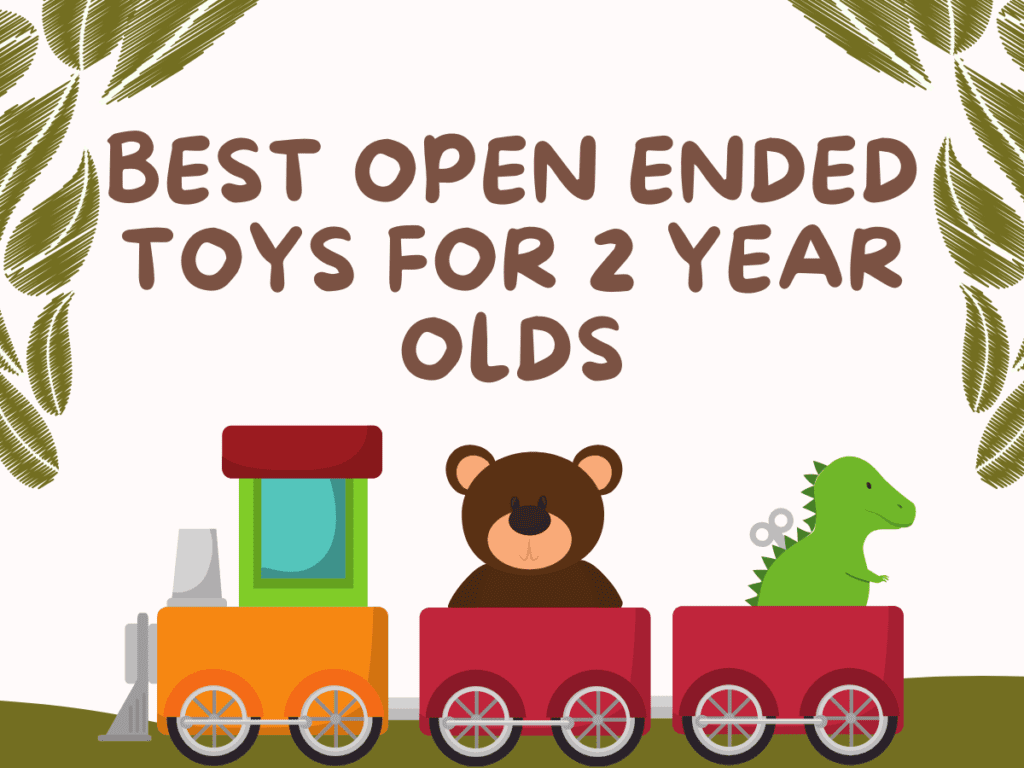
Best Open-Ended Toys for 2-Year-Olds
Building Blocks
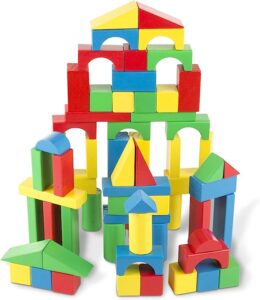
Classic building blocks! These are a staple in many households, and for good reason. Blocks can become anything—a tower, a castle, a spaceship, you name it. They are the epitome of open-ended play. Your child can stack them, sort them, and even use them to learn basic math concepts like counting and patterns. Plus, the act of stacking and balancing helps develop fine motor skills.
Play-Doh Sets
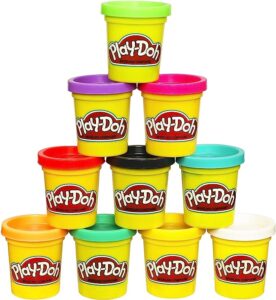
Play-Doh is more than just squishy fun; it’s a tool for imagination. Whether your 2-year-old is making pretend cookies or sculpting a family of animals, playdough allows for endless creativity. It’s also great for developing hand strength and enhancing fine motor skills. Not to mention, you can easily make homemade playdough with simple ingredients if you’re wary of store-bought versions.
Art Supplies
You don’t need anything fancy here—just some crayons, paper, or maybe some non-toxic watercolour paints. Art supplies give your child the freedom to express themselves and make whatever they desire. This not only nurtures creativity but also helps them understand colours, shapes, and even basic concepts of spatial reasoning.
Wooden Train Sets
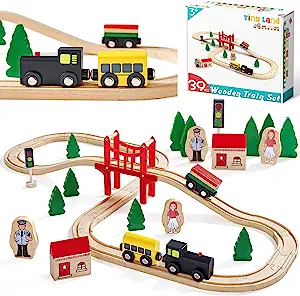
The charm of a wooden train set is its ability to be configured in numerous ways. Your child can build tracks that twist and turn, go up hills, or even through tunnels. This kind of play fosters imagination and can be a wonderful solo or group activity, helping your child understand concepts like sharing and cooperation.
Simple Musical Instruments
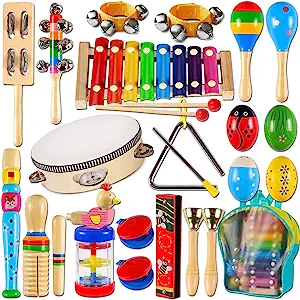
From shaking a maraca to pounding a drum or tinkling a xylophone, simple musical instruments can bring joy and exploration into your child’s life. Beyond the sheer fun, they’re also excellent for sensory development and early introduction to rhythm and melody.
Puzzles with Basic Shapes
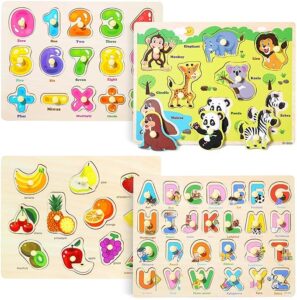
At first glance, a puzzle might seem like a closed-ended toy. But puzzles that incorporate basic shapes or open-ended designs encourage kids to think creatively about how pieces fit together. The process of figuring this out promotes cognitive development and enhances problem-solving skills.
Dolls and Action Figures
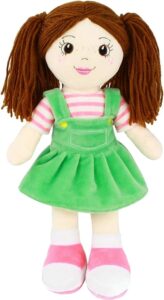
Whether it’s a ragdoll or a superhero action figure, these toys are great for role-playing. Role-playing encourages empathy and social skills as children imagine different scenarios, like going to a doctor or being a teacher. The scenarios they create can be as varied as their imagination allows.
Sand and Water Play Sets
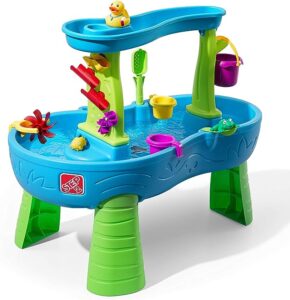
Water tables or sandboxes may seem messy, but they offer unparalleled sensory experiences. Your child can feel different textures, understand concepts like ‘full’ and ’empty,’ and experiment with cause and effect (e.g., what happens when you pour water on sand?).
Kitchen Play Sets

Miniature kitchen sets do more than just offer ‘cooking’ fun. They can be a great way to teach basic life skills like organizing, cleaning, and even some basic cooking techniques. Plus, there are plenty of opportunities for imaginary play—like running a restaurant or having a tea party.
Animal Figurines
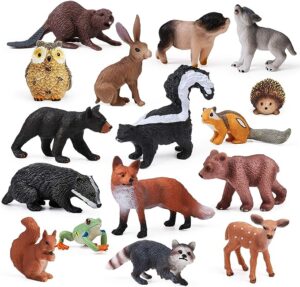
Small animal figurines can serve as characters in your child’s ever-expanding world of imagination. They can roam the jungles, live on a farm, or even embark on an intergalactic journey. The scenarios are endless and entirely up to your little one’s creativity.
Choosing the right toy for your 2-year-old doesn’t have to be a monumental task. Open-ended toys like the ones listed above can provide hours of meaningful, skill-building fun. So why not make your next toy a catalyst for creativity and growth?
What Type of Toys Do 2-Year-Olds Play With?
As any parent of a 2-year-old will tell you, the world is an enormous playground to these little explorers. You’ll find that at this stage, children are drawn to a wide variety of toys. Some of the popular picks often include ride-on toys for the adventurous, soft toys for comfort, and bright, noisy gadgets that grab their attention.
When it comes to how 2-year-olds interact with toys, it’s a phase of constant exploration and learning. They love to touch, taste, shake, and disassemble just about anything they can get their hands on. It’s a time of intense curiosity where every interaction feeds their rapidly developing senses and intellect. You’ll often notice pretend play starting to take off at this age. Don’t be surprised to find your child talking to their stuffed animals or using a banana as a phone!
However, this age is also a time when parents can make some common mistakes in choosing toys. One major pitfall is going overboard with electronic or educational gadgets. While these may promise to turn your child into a genius overnight, they often limit the scope of play and imagination. Another mistake is choosing toys with too many small parts, which not only pose a choking hazard but can also be overwhelming for the child. Lastly, following gender stereotypes in toys can limit your child’s development. Remember, a 2-year-old doesn’t know that trucks are “for boys” and dolls are “for girls”—they just know what’s fun!
2-year-olds are drawn to a wide variety of toys that offer tactile, auditory, and visual stimulation. The best choices will feed their natural curiosity and offer endless opportunities for imaginative play. So, keep these things in mind the next time you’re walking down that seemingly endless toy aisle.
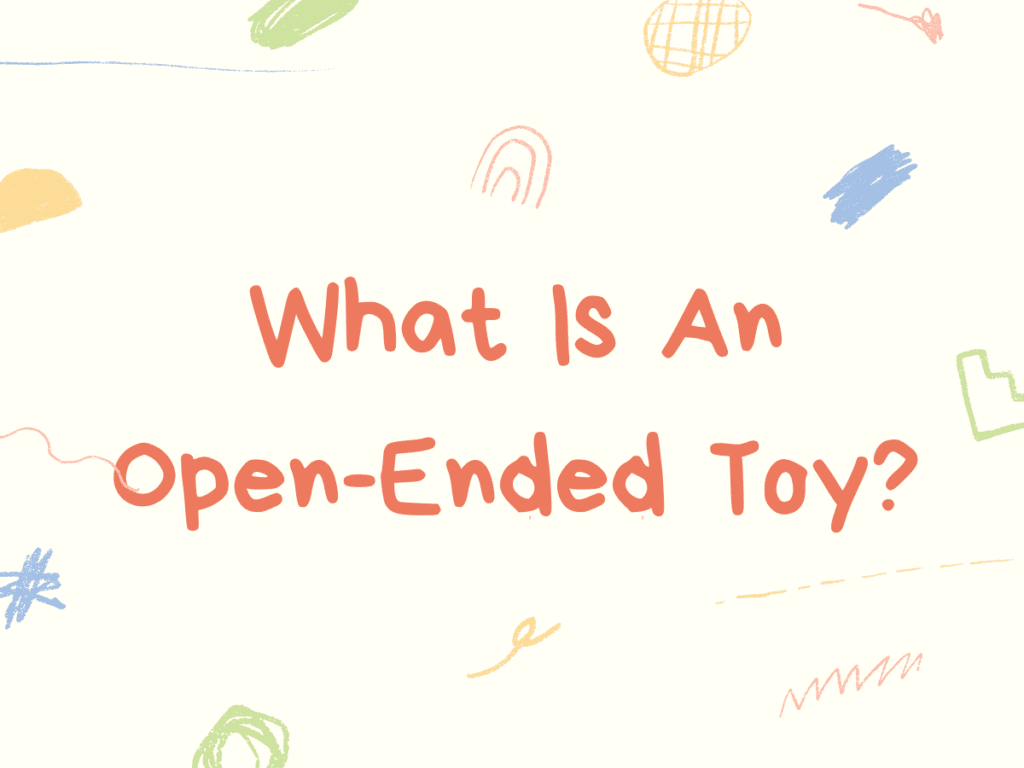
What Is An Open-Ended Toy?
Determining whether a toy is open-ended can be a bit like figuring out a puzzle—luckily, not a very complicated one! Open-ended toys typically have certain characteristics that set them apart from other types of toys. The key traits include:
- Versatility: The toy can be used in multiple ways, limited only by your child’s imagination.
- No Defined Goals: These toys don’t have a specific problem to solve or an endpoint.
- Encourages Creativity: Open-ended toys usually require active participation, imagination, or problem-solving from the child.
So how do you spot an open-ended toy when shopping? Well, a helpful question to ask yourself is, “Can this toy be used in different ways?” For instance, a set of wooden blocks can be stacked, lined up, or even used as pretend food items in a play kitchen. Also, check the packaging for phrases like “endless possibilities,” “encourages imaginative play,” or “multiple configurations.”
Let’s draw a quick comparison to help clarify the difference between open-ended and closed-ended toys through examples:
- Open-Ended Toy Example: A simple set of coloured scarves can be used for juggling, pretending to cook, wrapping them around as a superhero cape, or creating a small puppet show.
- Closed-Ended Toy Example: A puzzle with slots for different shaped blocks. Once all the shapes are inserted correctly, the activity is over. The toy served its purpose and doesn’t allow for much imagination beyond that task.
In the open-ended example, the scarves can be many different things, fueling your child’s creativity and problem-solving skills. On the other hand, the shape-sorting puzzle has a single, defined outcome, making it a closed-ended toy.
What is an Example of Open-Ended Play?
Open-ended play is a type of play that has no set rules or objectives, leaving children free to use their imagination and creativity to guide the activity. Unlike games or activities with a defined outcome or goal, open-ended play allows children to explore possibilities, experiment, and learn in an unstructured manner.
Real-World Examples and Scenarios
What does open-ended play look like in action with a 2-year-old? Imagine giving your toddler a large cardboard box. It might become a spaceship zooming to Mars one minute and a pirate ship sailing the high seas the next. Or perhaps you and your little one go on a nature walk and collect twigs, leaves, and stones. Once you’re home, these natural materials could become ingredients in a magic potion or the beginnings of a fairy village.
Another scenario involves a simple picnic blanket spread out in the living room. To adults, it’s just a blanket, but to a 2-year-old, it could be a magical carpet ready to fly, a castle under siege, or a peaceful island to rest upon.
Integration Into Daily Routines
Open-ended play doesn’t require special toys or elaborate set-ups. It can be easily integrated into daily routines. For example, bath time can become a maritime adventure, complete with foam letters as islands and rubber duckies as sea creatures. During meal prep, some safe kitchen utensils and a mixing bowl can transform your child into a budding chef.
Even chores can involve open-ended play. A laundry basket can suddenly turn into a boat that needs rowing across the “living room ocean.” It’s all about the perspective and freedom to imagine, making mundane tasks more exciting for your toddler—and maybe even for you!
Understanding the concept and benefits of open-ended play can add a new dimension to your child’s daily life. It provides opportunities for creativity, problem-solving, and most importantly, fun! So next time you find yourself looking for ways to keep your 2-year-old entertained, remember: the possibilities are endless when you allow their imagination to take the lead.
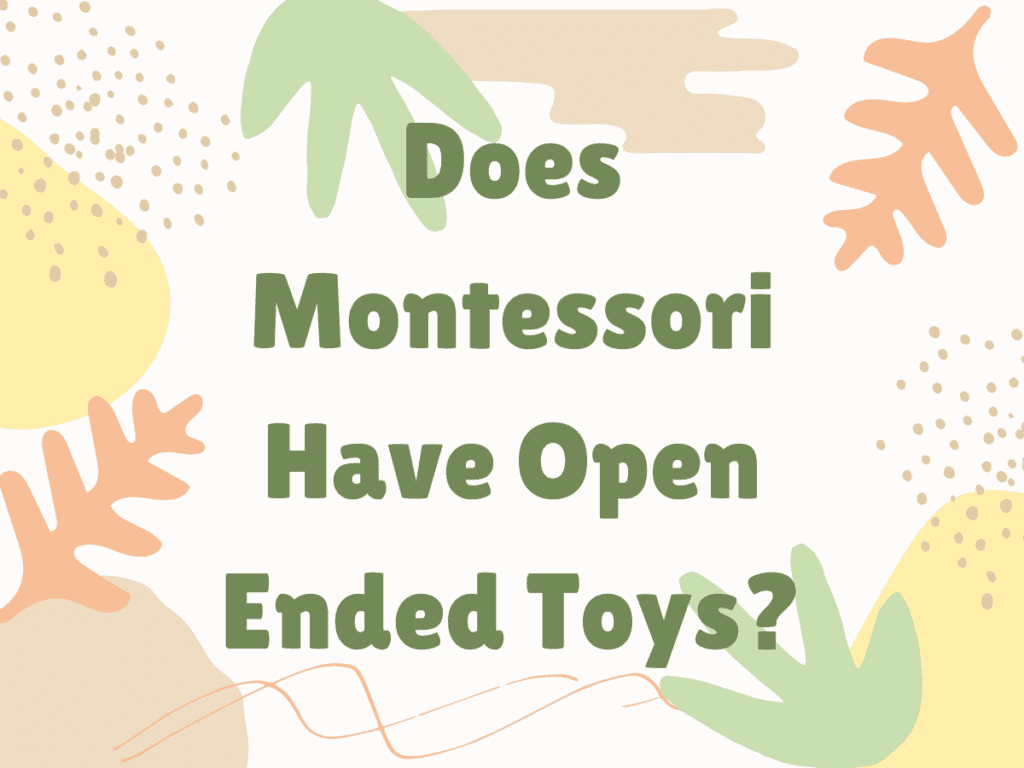
Does Montessori Have Open-Ended Toys?
Brief Overview of the Montessori Philosophy
The Montessori method is an educational philosophy and practice that encourages children to be active participants in their own learning. Developed by Dr. Maria Montessori over a century ago, this approach emphasizes independence, freedom within limits, and respect for a child’s natural psychological development. Montessori environments are thoughtfully designed to offer hands-on, engaging experiences that meet children where they are developmentally.
How Montessori Integrates Open-Ended Toys in Their Educational Approach
In Montessori settings, you’ll often find a variety of open-ended materials and toys that are seamlessly integrated into the curriculum. These are designed to stimulate children’s curiosity, promote physical development, and encourage imaginative play. Montessori toys like wooden blocks, sensory boards, and fabric swatches align perfectly with the idea of open-ended play, offering multiple uses and endless opportunities for exploration.
Differences Between Montessori Open-Ended Toys and Mainstream Open-Ended Toys
While the core philosophy behind open-ended toys remains the same whether you’re in a Montessori setting or not, there are some distinctions worth noting. Montessori toys often lean towards natural materials like wood, cotton, and metal, avoiding the bright plastics you might find in more mainstream toys. This choice in material reflects Montessori’s focus on creating a calming, natural environment that’s rooted in real-world experiences.
Additionally, Montessori toys often come with an educational slant that’s subtly woven into their design. For example, a set of Montessori wooden cylinders of different sizes not only allows for open-ended stacking and building but also introduces concepts like sorting and gradation.
So yes, Montessori environments do indeed feature open-ended toys, but they do so with a specific educational philosophy in mind. Whether you’re fully on board with Montessori methods or are just looking for toys that offer lasting play value, understanding how Montessori toys fit into the world of open-ended play can offer valuable insight into your options.
Finals Thoughts On Open Ended Toys For 2-Year-Olds
Choosing the right toys for your 2-year-old is more than just a shopping decision; it’s an investment in their growth and development. Open-ended toys offer an expansive playground for your child’s imagination, creativity, and problem-solving skills. Whether you opt for mainstream choices or decide to explore the Montessori approach, remember that the best toys are the ones that allow your child to express themselves freely and discover the world around them in their unique way. So go ahead, bring home some open-ended toys, and watch your 2-year-old flourish!

